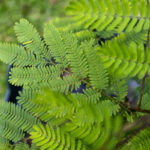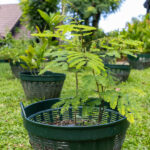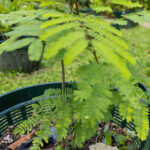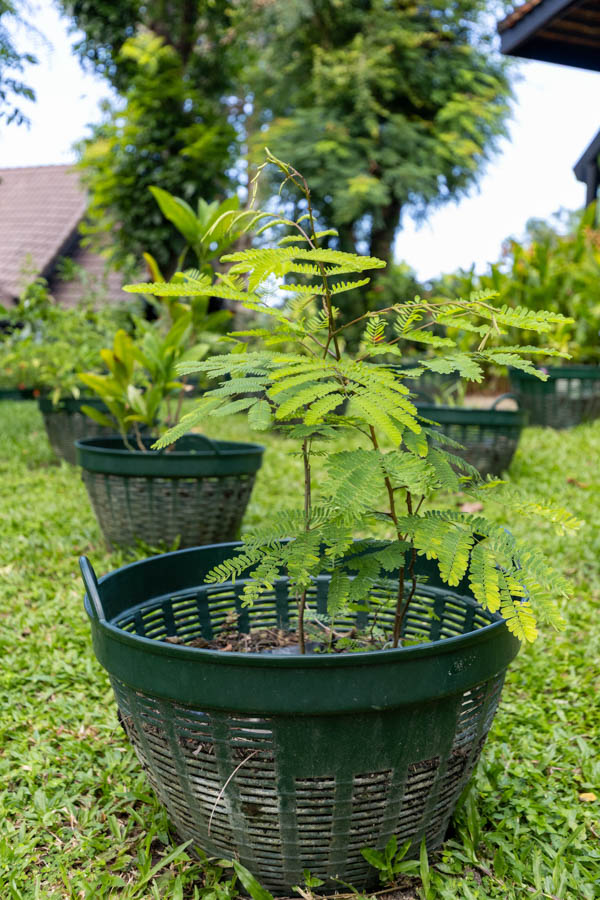มะขาม (Ma Kham)
Family: Fabaceae
Tamarindus indica, known as Tamarind, is a long-lived tropical tree native to Africa but deeply integrated into Thai culture and medicine for centuries. It is easily recognized by its fine compound leaves and brown, pod-like fruits containing tangy pulp. In Thai traditional medicine, nearly every part of the tamarind tree — from the fruit and seeds to the leaves and bark — is used for healing and wellness.
Botanical Characteristics
Tamarind trees can reach heights of 20–25 meters and develop a dense, spreading canopy. The leaves are pinnate, with numerous small, oblong leaflets that fold together at night. The tree produces yellowish flowers with red veins, followed by curved pods containing sticky brown pulp. The species is drought-tolerant and thrives in warm tropical climates with moderate rainfall.
Use in Thai Traditional Medicine
In Thai traditional medicine, มะขาม (Ma Kham) is renowned for its cleansing and cooling properties. The fruit pulp is used as a mild laxative and digestive aid, helping relieve constipation and improve appetite. A decoction of the leaves or bark is used to reduce fever and soothe inflammation. Externally, tamarind pulp mixed with salt or honey is applied to the skin to exfoliate, reduce acne, and brighten complexion — a practice still common in Thai spa treatments today.
Cultivation Notes
Tamarindus indica grows well in full sunlight and well-drained soil. It is drought-resistant once established and benefits from occasional pruning to shape young trees. The tree is often planted along roadsides and in gardens throughout Thailand, valued for both its fruit and shade. In the KBE Thai Medicinal Herb Garden, it symbolizes the connection between nourishment, natural healing, and traditional beauty care.
Historical Context
Tamarind has a long history in Ayurvedic, Arabic, and Thai medical traditions. In old Thai texts, it is described as both a purifying and restorative herb. Its sour taste classifies it in traditional Thai medicine as a “cooling” plant, balancing excess heat in the body and aiding detoxification. Today, tamarind remains a vital component of Thai cuisine, herbal preparations, and holistic skincare.
Disclaimer: This information is provided for educational and historical purposes only. It is not intended as medical advice. Always consult a qualified healthcare professional before using any herbal preparation.




